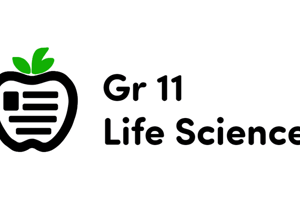Podcast
Questions and Answers
What are the four distinct whorls or cycles present in a flower?
What are the four distinct whorls or cycles present in a flower?
Outer calyx, Corolla, Androecium, Gynoecium
What is the main function of the corolla in a flower?
What is the main function of the corolla in a flower?
Attracting pollinators
What are the male reproductive organs of a plant called?
What are the male reproductive organs of a plant called?
Stamens
What are the female reproductive organs of a plant called?
What are the female reproductive organs of a plant called?
What is the collective term for the sepals and petals in a flower?
What is the collective term for the sepals and petals in a flower?
What is the floral axis in a flower?
What is the floral axis in a flower?
What is the main function of flowers for the reproduction of angiosperms?
What is the main function of flowers for the reproduction of angiosperms?
How do flowers attract pollinators?
How do flowers attract pollinators?
What is the role of sepals and petals in flowers?
What is the role of sepals and petals in flowers?
Explain the significance of flowers in the sexual reproduction of angiosperms.
Explain the significance of flowers in the sexual reproduction of angiosperms.
Why is understanding the structure and functions of flowers essential?
Why is understanding the structure and functions of flowers essential?
What are the essential functions of flowers for angiosperms?
What are the essential functions of flowers for angiosperms?
Flashcards are hidden until you start studying
Study Notes
Flower: A Fascinating Organ of Angiosperms
Flowers are the reproductive structures of angiosperms, and they play a crucial role in the sexual reproduction of these plants. They are complex structures that have evolved to attract pollinators and protect the essential reproductive organs. This article will discuss the structure of a flower, focusing on its main components and functions.
Structure of a Flower
A flower consists of a floral axis, which is a greatly modified stem that supports the essential reproductive organs. Flowers are usually arranged in four distinct whorls, or cycles, around the axis:
- Outer calyx: Consisting of sepals, which are often greenish and resemble reduced leaves.
- Corolla: Composed of petals, which are usually colorful and showy, attracting pollinators.
- Androecium: Contains stamens, which are the male reproductive organs of the plant.
- Gynoecium: Comprises pistils, which are the female reproductive organs.
These whorls are often referred to as the floral envelope, which together with the sepals and petals, protects the reproductive organs of the flower.
Functions of Flowers
Flowers serve several essential functions for the reproduction of angiosperms:
- Sexual reproduction: Flowers are the reproductive organs of angiosperms, and their function is to facilitate sexual reproduction through the process of pollination.
- Attraction: The vibrant colors and nectar produced by flowers attract pollinators, such as insects and birds, which help in the pollination process.
- Protection: The structure of a flower, particularly the sepals and petals, provides protection for the reproductive organs before they blossom.
Conclusion
Flowers are fascinating organs of angiosperms that play a crucial role in the sexual reproduction of these plants. They have evolved to attract pollinators and protect their essential reproductive organs, ensuring the successful reproduction of the plant species. Understanding the structure and functions of flowers is essential for appreciating the diversity and adaptability of angiosperms in various ecological environments.
Studying That Suits You
Use AI to generate personalized quizzes and flashcards to suit your learning preferences.




